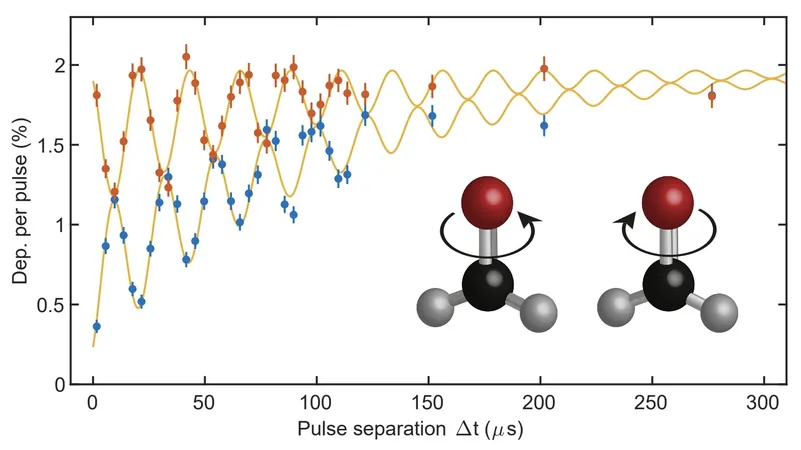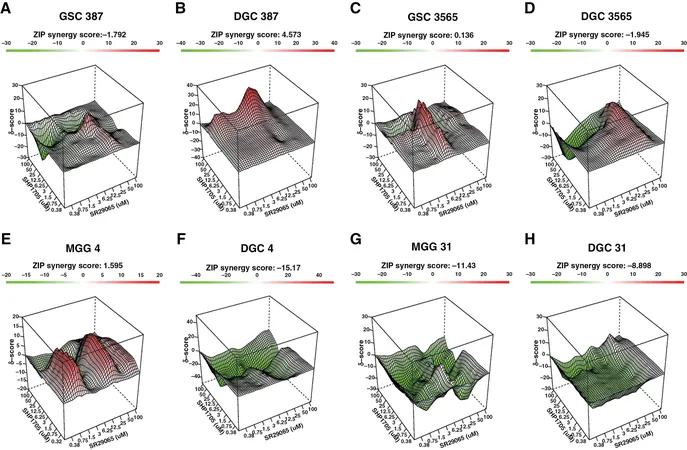
Unlocking the Future: Polar Molecule Quirks Could Revolutionize Quantum Computing!
2025-04-16
Author: Yu
In a groundbreaking study, researchers at the Max Planck Institute for Quantum Optics have unveiled a revolutionary approach to quantum computing using polar polyatomic molecules. These rare molecules, boasting an uneven distribution of electric charge, have been largely overlooked in the quest for efficient qubit storage and manipulation.
As the race for more powerful quantum computers heats up, traditional methods relying on superconductors or trapped ions have dominated the landscape. However, the potential of polar molecules opens a tantalizing new frontier in the world of quantum technology.
Discovering the Hidden Potential of Formaldehyde!
The researchers focused on the unique rotational states of formaldehyde, a simple yet intriguing molecule. By examining these states, they discovered that the clockwise and counterclockwise rotations form pairs with identical properties, which could actually conceal quantum superpositions.
"For years, we treated these paired states simply as one, but they hold untapped potential for robust quantum information storage," said Maximilian Löw, the study’s lead author. This insight reveals that the pairs could serve as a stable reservoir for qubits, significantly enhancing the capability of quantum computers.
From Theory to Practice: The Art of Trapping Cold Molecules
To validate their concept, the team developed an innovative trapping method using electrostatic fields. This allows them to cool molecules to the brink of absolute zero, creating the ideal conditions necessary for experimentation. Through this meticulous process, they could create superpositions and demonstrate quantum coherence in these rotational pairs.
Employing a technique known as Optoelectric Sisyphus Cooling, they successfully chilled the formaldehyde molecules and trapped them effectively in their unique microstructured electric trap.
The Game-Changing Findings: Robustness in Coherence!
Astonishingly, the superposition states they manipulated showed remarkable resilience, maintaining coherence even in a noisy environment. While typical electric traps might destroy a qubit’s state in under a nanosecond, their innovative technique demonstrated coherence times approaching 100 microseconds!
This resilience signifies that polar molecules could become a viable platform for the next generation of quantum computing, pushing the boundaries of what’s possible.
A Call to Action for Future Research!
Despite the promising results, the team is seeking further funding to expand their research. They firmly believe that exploring the experimental platform they've outlined could pave the way for a new era in quantum technology.
Zeppenfeld passionately advocates for collaboration across research teams, emphasizing the potential of polar molecules to revolutionize quantum computing. "It’s exciting to think about the possibilities that lie ahead, and I hope to see others build upon our findings in innovative ways. The future is bright for quantum computation thanks to these discoveries!"




 Brasil (PT)
Brasil (PT)
 Canada (EN)
Canada (EN)
 Chile (ES)
Chile (ES)
 Česko (CS)
Česko (CS)
 대한민국 (KO)
대한민국 (KO)
 España (ES)
España (ES)
 France (FR)
France (FR)
 Hong Kong (EN)
Hong Kong (EN)
 Italia (IT)
Italia (IT)
 日本 (JA)
日本 (JA)
 Magyarország (HU)
Magyarország (HU)
 Norge (NO)
Norge (NO)
 Polska (PL)
Polska (PL)
 Schweiz (DE)
Schweiz (DE)
 Singapore (EN)
Singapore (EN)
 Sverige (SV)
Sverige (SV)
 Suomi (FI)
Suomi (FI)
 Türkiye (TR)
Türkiye (TR)
 الإمارات العربية المتحدة (AR)
الإمارات العربية المتحدة (AR)